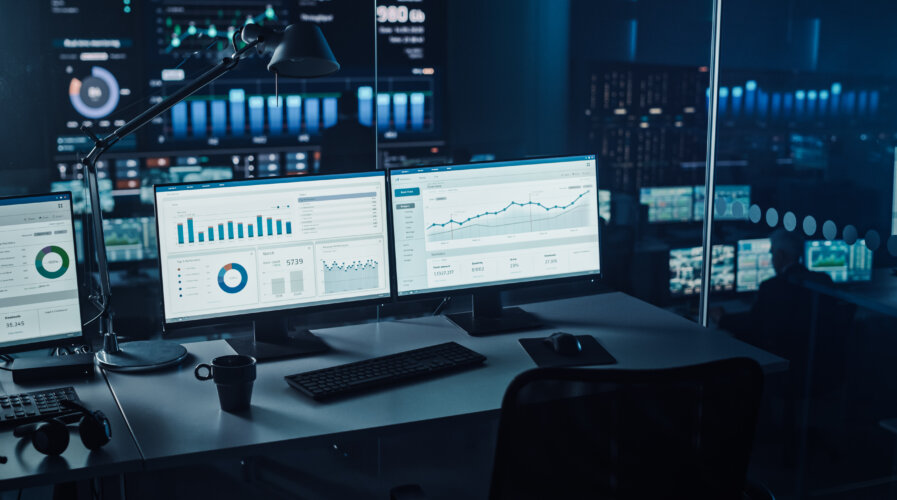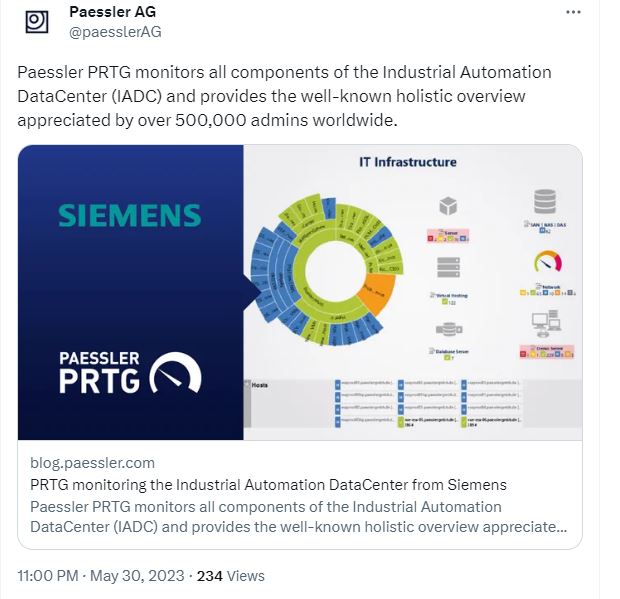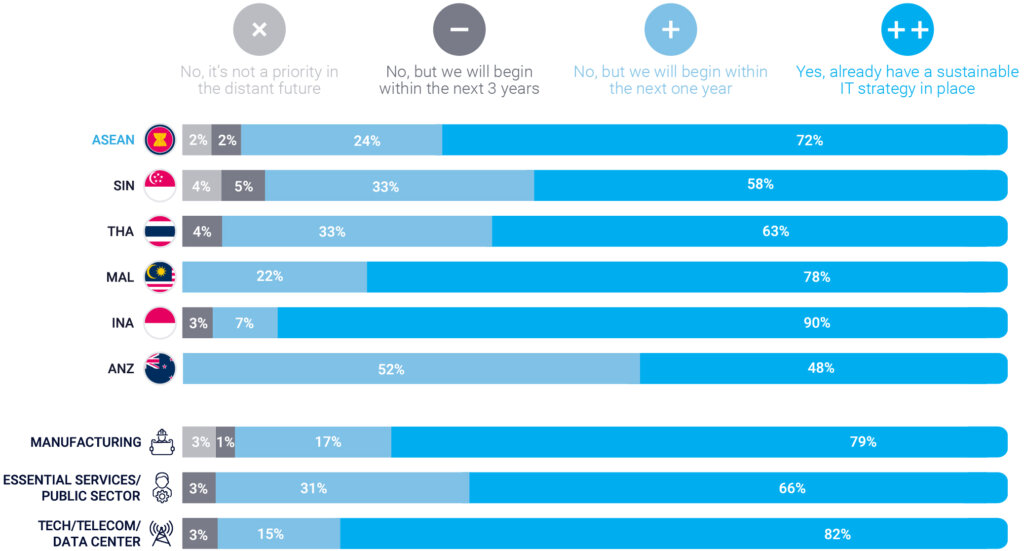
Can IT monitoring help with sustainable practices? (Image – Shutterstock)
IT infrastructure monitoring can boost sustainable practices for businesses
|
Getting your Trinity Audio player ready... |
- IT monitoring’s role in reducing carbon emissions can be a game-changer for ESG.
- IT monitoring can also give businesses better visibility into their IT operations.
Sustainable practices remain a priority for organizations worldwide. Today, businesses that do not prioritize environmental, social, and corporate governance (ESG) practices often find themselves lagging behind those that do.
In fact, many companies are implementing numerous sustainable practices in the workplace. From managing waste to reducing energy emissions, businesses are increasingly seeing how sustainable practices can boost productivity and profits in the long run.
Some industries are making significant changes to their energy emissions in an effort to improve sustainable practices. For example, Singapore has launched one of the world’s first standards for optimizing energy efficiency for data centers in tropical climate countries.
The new standard, announced by the Infocomm Media Development Authority (IMDA), aims to help data centers develop a roadmap to support the gradual increase in operating temperatures to 26°C and above. This could lead to data centers potentially benefiting from a 2% to 5% cooling energy savings for every 1°C increase in the operating temperature.

A Tweet by Paessler on IT monitoring.
Exploring sustainable practices
While data center operators strive to manage their temperature and reduce carbon emissions, businesses can also do their part by implementing different sustainable practices in working with technology.
With digital transformation still topping the agenda for most organizations in the Asia Pacific, a report by Paessler shows businesses considering IT infrastructure monitoring to optimize energy consumption, reduce emissions, and quantify the volume of resources saved.
Paessler’s “Keeping Watch: Monitoring Your Path to a Sustainable IT” report focuses on sustainability practices in digital transformation in Singapore, Thailand, Malaysia, Indonesia, Australia, and New Zealand.
Currently, the technology, telecom, and data center sectors are seen as leaders in having a sustainable IT strategy in place, followed by manufacturing, essential services, and the public sector. Although the public sector is lagging, 31% said that they plan to embark on their sustainable IT strategy journey within the next year.
According to the report, 52% of businesses in Southeast Asia are still developing sustainable practices, which include a sustainability framework. Indonesia is the furthest behind, with 96% of businesses feeling that their top management is not aware of how to implement sustainable practices, especially in IT.
In Malaysia, the report revealed that organizations are developing sustainability frameworks and digital transformation strategies in a piecemeal manner, which is rather concerning. However, organizations in Malaysia are realizing the benefits of IT infrastructure monitoring, a critical element in an organization’s IT strategy, to help optimize energy consumption (95%), analyze the need for IT equipment (95%), monitor environmental factors like temperature, humidity, CO2 (89%), and reduce emissions (84%).
“Many businesses see sustainability and profitability as a contradiction, but when the right values are measured, it results in cost efficiency and a competitive lead. It is imperative to build a robust IT strategy, a digital transformation strategy, and develop a sustainability framework, which are all integrated by a comprehensive IT monitoring framework. Bridging the gap between digital transformation and sustainability to make data-based decisions can result in resource optimization and bring economic benefits for businesses,” said Felix Berndt, Regional Sales Manager of Asia Pacific, Paessler.

Businesses should prioritize sustainable practices as part of their digital transformation. (Source – Paessler)
What is IT monitoring?
IT monitoring comprises tools that help businesses manage their IT products and services. There are many IT monitoring tools on the market today. Here are some of the most popular ones used by organizations:
- PRTG Network Monitor – PRTG is a unified monitoring tool by Paessler that can monitor almost any object that has an IP address. It consists of the PRTG core server and one or more probes. The PRTG core server handles configuration, data management, the PRTG web server, and more. Probes collect data and monitor processes on devices via sensors.
- Prometheus – A popular open-source infrastructure monitoring tool, Prometheus works with time-series-based data. The services it monitors should expose an HTTP metrics endpoint that Prometheus periodically polls. Prometheus uses a single node-based configuration and does not require distributed storage in the architecture. It also uses Prometheus Query Language (PromQL) for querying and aggregating monitoring data in real-time.
- ManageEngine OpManager – An infrastructure monitoring software that supports real-time monitoring of networks, physical and virtual servers, storage devices, and more. With customizable dashboards that have over 200 performance widgets, the platform provides a comprehensive view of overall network performance, in addition to performance monitoring of hosts and VMs in the infrastructure.
- AppDynamics – A comprehensive infrastructure monitoring solution that covers server, storage, and network components in both cloud-native and hybrid environments. Businesses can deploy it on-premises or use it as a SaaS service. Businesses can also avoid downtime by tagging user experience and business outcomes to events collected from the infrastructure.
- New Relic – A full-stack monitoring tool that provides businesses with visibility into the performance of their infrastructure components through rich dashboard capabilities. Rather than having to switch contexts between different applications, New Relic allows companies to monitor information from logs, infrastructure, applications, serverless functions, and more—all from a single tool.
IT monitoring for sustainable practices
While IT monitoring’s role in reducing carbon emissions might not be as pronounced as other sustainable practices, it provides businesses with sufficient visibility into their operations, highlighting areas for improvement. This, in turn, is not only sustainable, but can also lead to enhanced productivity and efficiency.
As Paessler’s study puts it, “a sustainable IT strategy backed by comprehensive IT monitoring framework must be a vital part of the business operations. This will ensure sourcing material, production processes and all other components of a sustainable business can be integrated by the overarching digital transformation strategy.”
READ MORE
- Safer Automation: How Sophic and Firmus Succeeded in Malaysia with MDEC’s Support
- Privilege granted, not gained: Intelligent authorization for enhanced infrastructure productivity
- Low-Code produces the Proof-of-Possibilities
- New Wearables Enable Staff to Work Faster and Safer
- Experts weigh in on Oracle’s departure from adland


